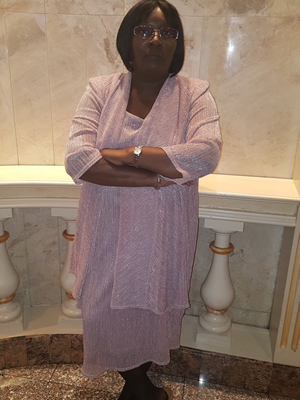Traditional Healing Practices – Implications for Healthcare
According to the 2011 census, India is inhabited by 104 million people classified as tribals (i.e., ~8.6% of the country’s population) belonging to over 550 tribal communities and approximately 277 ethnic groups. Tribal communities have totally submitted themselves to the forest setting and as a result of living so close to nature have, over the years, acquired a unique knowledge about the use of local resources. Given they hold precious knowledge on the specific use of a large number of wild plants one could almost consider them as the real custodians of medicinal plants. There is a growing understanding of the pivotal role medicinal plants play in providing herbal remedies to health maladies. According to a study conducted by the All India Coordinated Research Project on Ethno-biology (AICRPE), over ten thousand wild plant species are reported to be used by tribals for meeting their primary healthcare as well as food requirements. Further, there are approximately eight thousand medicinal plant varieties utilised by over two million traditional healers for treating ailments of both humans and livestock. Traditional medicine bequeathed from generation to generation is rich in domestic recipes for common health ailments. The best known examples of traditional medicine, differing in concept and protocol, are well developed systems such as ayurvedic and herbal treatments that have been widely used to sustain human health, especially in tribal regions of India.
1. Bhokar/Shelti – cures kidney stones, diarrhoea and stomach problem
2. Karvand – A rich source of Iron, Phosphorus and Vitamin C
3. Pathari – For ichthyosis (scaling of skin), xeroderma (dry skin). The roots are crushed and the extract is used
4. Kadu kand – Well cooked bulb slices can be consumed to get relief from stomach ache whereas paste of heartwood is used to cure wounds
5. Tetu – It is administered to women to treat leucorrhoea and menorrhoea
Traditional Medicine – Links to Maternal and Child Health
Traditional medicine is critical and has contributed tremendously to the healthcare of both the mother and the child in tribal regions. Jawhar block in Palghar district, Maharashtra is a tribal block having rich biodiversity, especially rice varieties having specific characteristics and uses. The tribal farmers have cultivated diverse rice varieties for purposes such as food security, instant energy provision during peak workload and medicinal use. This wonderful diversity of rice has formed the basis of a nutritious and secure diet for the vulnerable groups of the tribal population, that is, mothers, pregnant and lactating women and young children.
Various ongoing studies conducted by the NGOs such as BAIF Development Research Foundation in different tribal belts across Maharashtra found a number of rice varieties having specific medicinal properties and uses. For instance, one rice variety called ‘Mahadi’ has multiple health benefits; one of them is to cure weakness in women post pregnancy. Other rice varieties include Rajghudya and Kali Kudai (used to increase breast milk in lactating women); Kali Khadsi (for child’s growth and nutrition); Kasbai (used for nebulisation, which gives instant relief from cough) and Dangi (used for instant energy boost), among others.
Furthermore, traditional kitchens, serve as an in-house medical supply store. Tribal regions lack proper healthcare centres. Thus, most of the child deliveries take place at home and not in a hospital. The rate of institutional deliveries is slowly increasing but there is still a long way to go for this to become a rule, rather than an exception. Since most of deliveries take place at home, the traditional birth attendants play a major role in tribal regions. One of the practices performed by the birth attendants in villages is to use materials like cow dung as a disinfectant in the house that helps keep various diseases at bay. The various homemade medications, mostly herbal, for the mother and child are also prescribed predominantly. Restoring the mother to her original physiology is a challenge that the native healers often take up.
Habitat Loss – A Threat to Traditional Medicine
An impending threat to further proliferation of traditional medicine is the rampant loss of habitat. Unregulated harvesting of wild produce coupled with ecological degradation leading to extensive resource depletion and tribal landlessness (and even those who do have land are continuously losing their land to the government or private corporations) are some of the factors posing a grave and growing threat to the conservation of indigenous foods and traditional medicinal plants.
Furthermore, there has been a gradual erosion of indigenous varieties, especially rice biodiversity. Most of the indigenous rice varieties are being replaced by high yielding varieties. These high yielding varieties have not resulted in any spectacular increase in yield in this region. The majority of farmers, especially the resource-poor tribal farmers are not able to afford high quality expensive fertilizers which are normally recommended along with these varieties.
Tribal Healers – Traditional knowledge erosion and threat to livelihood
In addition to the above, there has been a gradual loss of practical knowledge about traditional medicine and healing practices in the tribal regions, during the past couple of decades. This has resulted in poor health status of the most vulnerable sections of the tribal population. Many factors contribute to this knowledge erosion. The most pressing issues pertaining to this knowledge erosion are: a) lack of incentives and recognition. For instance, scientists and researchers collect data and publish their studies but often fail to give the due recognition to the healers. Also, the ayurvedic and allopathic drug companies extract knowledge for research and development purposes, but do not usually share profits with the tribal healers; b) lack of proper documentation of knowledge regarding traditional healing practices; and c) broken intergenerational links (impacting dissemination of age-old knowledge and traditions from older generation to the younger generation), among others.
Tribal healers are known to use their own systems of healthcare with plant and animal extracts. However, in the recent past, factors such as aversion to follow the low income traditional healing practices; gradual shift to more lucrative alternate livelihoods; greater reliance on non-traditional healing practices and high degree of inroads by modern medicine, is threatening the traditional medicinal traditions to proliferate further. The native tribal healers are precious, but, still remain a neglected lot.
Traditional medicine is critical as well as cost-effective (in relation to hospital care) and ensures self dependency on healthcare due to enhanced reliance on the local biodiversity. It must be given the much needed boost.
Further, majority of the traditional healers lack legal authority to heal. Herbal healers need to be identified and honoured. These unsung heroes need to be brought into the fold of the formal healthcare system of India so that unhindered services are made available to the needy in the villages. Further, weeding out unqualified healers is equally important. These healers provide their services to the most interior and under-served tribal regions. Thus, appropriate regulations and government policy actions and support would help streamline traditional healing practices.
With the state administered healthcare systems based on modern medicine unable to tackle the mammoth health challenges in the country coupled with the acute shortage of resources and well trained health personnel to effectively serve each and every one, it is imperative to get traditional healing practices back on wheels. Traditional knowledge sharing, conservation of the rich biodiversity and enhanced focus on tribal healing practices via greater recognition to the traditional healers and thus securing their livelihood is the need of the hour. Furthermore, providing much needed impetus to the time tested traditional medical practices is pertinent for ensuring better healthcare of all sections of the society, especially the most vulnerable section in the tribal belts of the country.













 Hits Today : 2281
Hits Today : 2281 Total Hits : 975577
Total Hits : 975577 Who's Online : 1
Who's Online : 1